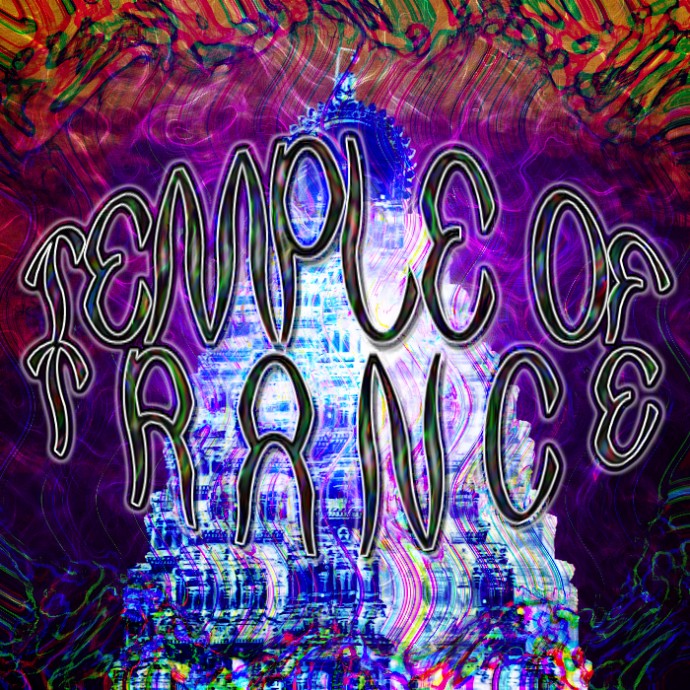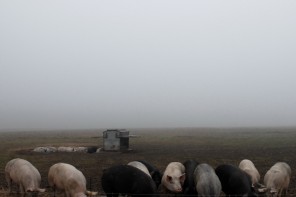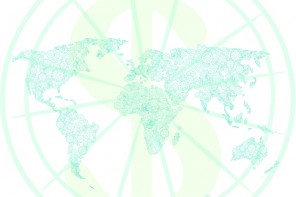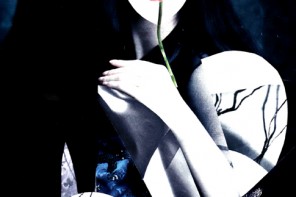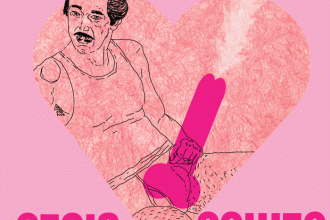Psytrance is a type of electronic dance music very generally characterized by fractal hypnotic rhythm and melodies, creative sampling and rolling basslines. A wide international culture has emerged alongside the music. The parties are often multi-sensory environments with spiritual and psychedelic art visuals, lazer shows and decorations to enhance your psychedelic drug experience and festivals transform outdoor sites into eco-conscious, pulsing, colourful alienesque discos with healing areas, fashion stalls, visionary art galleries, healthy food and healing/therapy areas. Psytrance covers a wide spectrum of subgenres to facilitate different journeys through your imagination such as Full-On, Dark, Forest, Progressive, Psydub/chill/breaks and so on.
After hearing about his lectures at a festival, I contacted cultural anthropologist, Dr Graham St John, author of several books on electronic dance music cultures, most recently “Global Tribe: Technology, Spirituality and Psytrance”. He has a particular interest in psytrance and the interfacing of technology and spirituality and is the founding Executive Editor of “Dancecult: Journal of Electronic Dance Music Culture”. We discussed his thoughts about what constitutes the heart of psytrance culture and what effects the modern developments have on the culture as it slowly entered nightclubs and attracted people who are ignorant about the roots but just wanted somewhere to go and get wasted and come out believing they’ve spiritually leveled-up.
I have been a long-time fan of psychedelic dance music, and attended many events in Australia from the beginnings of this development. Most of the people in my “family” are participants in this culture. My family is now extended worldwide. It is a transnational culture that is rooted in the open air full moon party, with sunrise as a key moment, i.e. in Goa, India. Goa Trance was produced to be performed at open air events. Total solar eclipse festivals are rooted in the Goa tradition. I don’t think it translates well to the typical club environment, especially those with a standard bar-temple.
Psychoactive compounds are integral to the development of psytrance, shaping a dance music culture, as they have shaped most dance music cultures, EDM (Electronic Dance Music) or otherwise. Many freaks travelled to Goa from the late 1960s onwards in part due to the repressive and intolerant attitudes in the countries of their birth towards lifestyle practices such as the consumption, for instance, of cannabis and LSD. Minimising prohibitions and decriminalising lifestyle practices would certainly make things much less paranoid and uncertain, which is the experience for event management teams in many parts of the world. What’s abundantly clear is that these cultures will always find a way to flourish regardless of legislation.
Wherever there is evidence of psychedelic trance hitched to commercial enterprise, such as in many cities, you tend to notice cocaine becoming a problem. Where there is cocaine addiction there is far less creativity and compassion, and more self-serving practices, ego driven paranoia, and in some cases, outright psychosis. Cocaine has been around for a long time in cosmopolitan scenes as has opposition to it and its users. Look at the criticisms of the likes of Cleo Odzer, an anthropologist/writer and participant in the 1970s freak scene in Goa. But that’s just part of the story.
In my book Global Tribe, a central theme I pursue is the heterogeneity of freak culture, the diversity in seasonal “trance dance” emergence and its flourishing worldwide festival culture. The connections between Ancient tribal communities and the psytrance scene are usually those that participants seek to make themselves. I would rather say that since dance – and here I’m talking about improvisational ecstatic dance forms and not structured professional dance, is universal to the human experience, and it is on this primary level that we can potentially connect with all other humans, no matter their social and cultural background, age, sexuality or gender. It is for this reason that events like Portugal’s Boom Festival has a dance floor – The Dance Temple – where in 2012 I might have shared a dance floor with people from 100 different countries. There is no other EDM culture that enables that type of cross cultural experience, even though peoples from many poorer nations are not represented. I don’t meet many Chinese people at festivals for instance. In some events like Australia’s Rainbow Serpent Festival, there is a significant commitment towards reconciliation with indigenous custodians through ritual performance – as in the Opening and Closing ceremonies. These and other elements suggest we’re talking about a culture and not simply a scene.
Whether electronic trance music is more effective than traditional drum circles depends on what your expectations and intentions are. At one level, a dance party is simply a highly optimised revisioning of a drum circle and is performing the same function – enabling connection between its participants and reconnection of one’s self with otherwise hidden or forgotten elements of the natural and spiritual world. Many people tend report feeling more alive in these moments than at any other time in their lives. Reports of anamnesia are common – where participants feel the lifting or dissolution of barriers occluding deep memories. These experiences possess therapeutic outcomes for participants. With electronic music and deejaying you have a highly optimised environment for enabling transcendence. I’ve written about superliminality. These events are assemblages of technics – from optimal sound systems to practical fashion, right down to vocal samples from movies programmed into tracks – that facilitate altered states. There is a constant artifice of refining these contexts to maximise potential. Are they more evolved? In terms of production qualities they are more improved than say events I attended in the 1990s, but are parties more evolved than drum circles? No, they are a different set of technics and techniques. What goes on at a Rainbow Gathering, for instance, is unique from cultural, practical and aesthetic, political perspectives..
Psytrance is not a “cult” in the standard pernicious tabloidal riff, which is usually entirely wrong, but there is an occultural element to psychedelic trance as can be found, for instance, in the many vocal samples programmed into tracks taken from science fiction cinema and horror films etc. that evoke gnostic or mystical states of awareness. Usually events are such that individual participants must do the work to assign their own meaning to extraordinary experiences, to make sense of it through their own networks and resourcefulness. This is no standard cult stuff – but highly idiosyncratic – self-shamanism. In this way psytrance is deeply esoteric and draws on a compendium of traditions, western, eastern, which are harnessed and amplified by modern technologies to produce an effect that participants seek to optimise and reoptimise in parties.
Different styles of psytrance have developed around the daily cycle in ways not evident in other EDM scenes. Most EDM cultures are associated with the nighttime economy and clubbing industry. The psychedelic trance culture is rooted in the Goa outdoor party season, where full moon/new moon and the rising sun are significant and sub-styles or genres have emerged such as darkpsy or night music (with faster bpm and gothic / haunting themes) and progressive or morning trance (with soaring melodies). It was once the case that producers would produce albums with a full range of styles. This is less likely today, as we’ve seen producers specialise in specific styles, perfecting those styles which also become tiring formulas often repeated as styles are taken up in new countries, waiting innovative crossovers and fusion, or inspirational leads.
Darkpsy pushes the boundaries of the possible. Played on a sound system that is designed for it, in my view dark trance or night music is like dark opera, and pushes the envelope on psychedelic electronica. When complemented with progressive sounds around dawn at an all-night outdoor event, this music facilitates transformative effects since it transports dancers into dark recesses of the psyche, helping to dissolve layers of the self – notably ego – before the illumination that is associated with the dawn and progressive music. That is, it’s definitely part of the Goatrance tradition where “dark” music was played at night before the rising sun, well before dark trance became a label. Importantly, participants aren’t just being altered, they are being altered together, so the potentiality of these moments does not simply affect individuals but communities that form or reform in their wake.
You find ‘purists’ who make distinctions about the value of any one style in any music scene, EDM or otherwise. People hold aesthetic prejudices. Enthusiasts often mark their aesthetic as authentic against those who they deem inauthentic or too “cheesy” or too “dark” or whatever, even though the experience might be genuinely transportative for the enthusiasts. There is a tendency in scenes to mark boundaries, and to require an “other” against which they define themselves – I go into this further in my book Technomad: Global Raving Counterculture. I do think you get a lot of elitism and sub-elitism in scenes. It’s most striking at the boundaries between scenes, which you’ll see, for instance, at festivals which host various genres of EDM. In the US, for example, psytrance amounts to leprosy among many EDM enthusiasts – why that is a subject worthy of discussion.
Psychedelic trance and its related event culture has provided me with most of my enduring friendships. My extended family around the world. I’ve had many insights, lows and highs, exhilaration and connections with fellow travelers and the cosmos within these environments. Being altered together has a tendency to generate enduring relationships – within myself, with those around me, and the planet.

